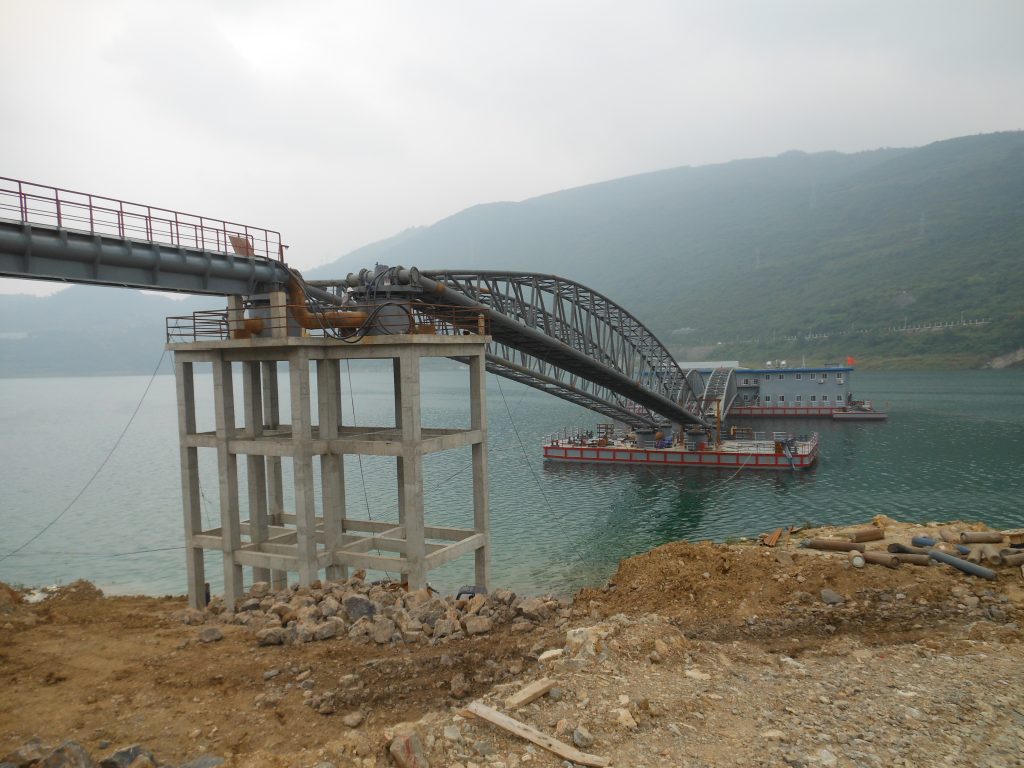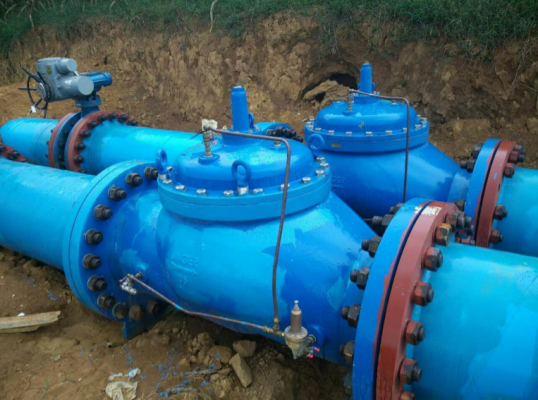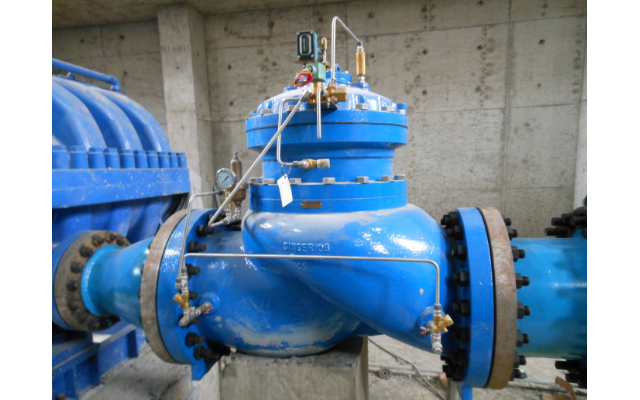The newly constructed Zhijin power plant in China’s Guizhou province gets its water from the Hongjiadu reservoir and transports it 8.1 km over mountainous terrain with an approximate elevation of 1150 meters. The water first travels up to a water treatment plant and then on to a water tank where supply can be controlled before it is gravity fed down to the plant. The high lift and long distance of this water distribution system makes it vulnerable to surges and pipe breaks.
The Design Institute called on Singer valves from Mueller Water Products to safely transport the water and ensure a stable flow of water regardless of flow rates that vary according to power production needs.
 The first stage involves pumping water from a floating dock and transporting it by two DN600 pipelines to the water treatment plant. To regulate surging when starting or shutting down the pump, two surge anticipating relief valves were installed on the dock. These two valves can be open before the surge comes and relieve the pressure from the pipe. This is especially important if there is a power failure and water rushes back down to the pump station. An added precaution to prevent surges was to install air valves on the pipeline to release any trapped air from the pipe.
The first stage involves pumping water from a floating dock and transporting it by two DN600 pipelines to the water treatment plant. To regulate surging when starting or shutting down the pump, two surge anticipating relief valves were installed on the dock. These two valves can be open before the surge comes and relieve the pressure from the pipe. This is especially important if there is a power failure and water rushes back down to the pump station. An added precaution to prevent surges was to install air valves on the pipeline to release any trapped air from the pipe.
After the water is treated, it is pumped to a water tank. With a 340 meter pump head, a surge calculation determined the need for a control valve after the pump with a surge anticipating relief valve mounted in a tee, downstream of the pump check valve. This is designed to anticipate surges and avoid the severe water hammer often associated with power failure surges. The Anticipating Relief Valve with Flow Limiting on Solenoid Valve Opening (106-RPS-ET-HFL) was selected to do the job. This valve is a pilot operated pressure relief valve designed to open when the inlet pressure exceeds a predetermined setting. The valve also opens when the solenoid valve is energized. When the solenoid valve opens the valve, the maximum opening of the valve can be limited. The solenoid valve is typically energized by a controller that senses power failure and/or low header pressure and uses battery power to energize the solenoid valve for a short adjustable period.
After the pump, there is a pump control valve to protect the pump, and also to be used as a check valve when the flow comes back. The Booster Pump Control Valve was installed after the pump to prevent surging during opening and closing of the pump.
The water tank is 180 meters higher than the power plant which makes this final transportation gravity fed via two DN600 pipelines over 6.3 km. With this elevation and distance a pressure reducing station was required in the middle. The Design Institute selected the Singer 106-PR with an anti-cavitation cage as the pressure drop between intake and outflow was greater than 3 to 1 ratio.
Cavitation consists of rapid vaporization and condensation within a liquid. When local pressure falls to vapor pressure (approximately 0.25 psi / 0.018 bar absolute for cold water), vapor bubbles are formed and when these bubbles travel to an area of higher pressure, the bubbles collapse with phenomenal force and great localized stress. It is the violent collapse of these vapor bubbles near valve components or downstream piping surfaces, which cause cavitation damage and subsequent performance degradation.
 The Singer anti-cavitation technology contains two heavy stainless steel sliding cages that maximize the full flow capacity. The first cage directs and contains the cavitation recovery, allowing it to dissipate harmlessly. While the second cage allows further control to a level as low as atmospheric pressure downstream. The cages are engineered to meet the flow / pressure differential of each application.
The Singer anti-cavitation technology contains two heavy stainless steel sliding cages that maximize the full flow capacity. The first cage directs and contains the cavitation recovery, allowing it to dissipate harmlessly. While the second cage allows further control to a level as low as atmospheric pressure downstream. The cages are engineered to meet the flow / pressure differential of each application.
After the pressure reducing station, the water flows in to the power plant with one last flow regulating valve installed at the entrance gate to ensure stable flow and pressure.
“We knew it was going to be very challenging to transport the water to the power plant safely with the elevations and distance that it needed to travel”, said Liu Zhizhao, Manager of Zhijin Power Plant. “The Singer surge anticipating plan and quality valves gave us the confidence to complete this project,” concluded Mr. Zhizhao.
The power plant has capacity to produce 2X660MW that travels 150 km to power the city of Guiyang and the surrounding communities. Zhijin power plant employs around 600 people.




